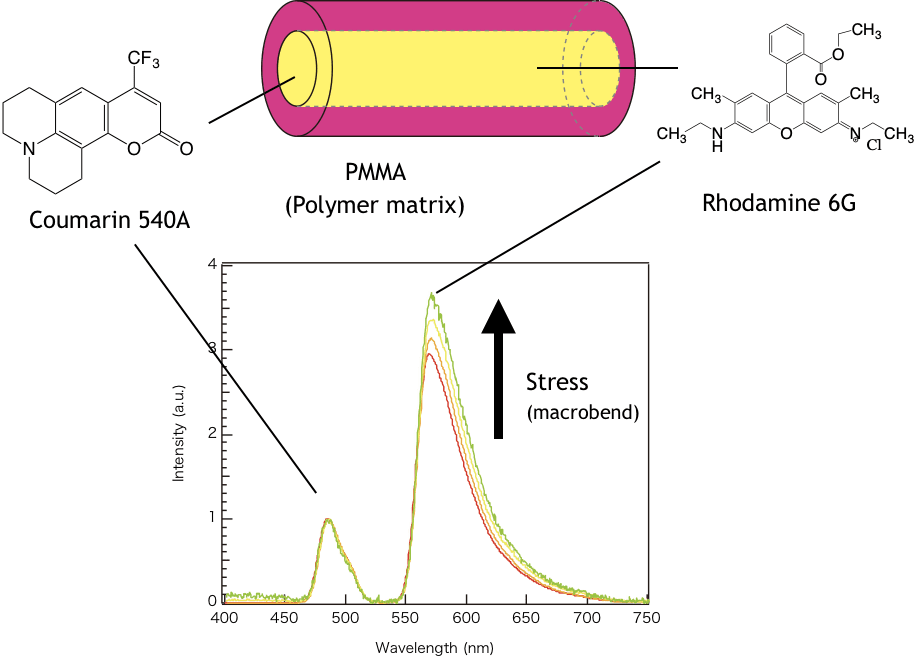December 2019 Issue
Research Highlights
Polymer-based optical fiber for visualization of stress
Fiber-optic strain sensing is known for its ability to monitor large areas. However, most types of fiber-optic strain sensors require spectrum analysis instruments, which drastically increases the overall cost of sensor systems. In contrast, fiber-optic strain sensors such as Bragg-grating or Brillouin optical time domain reflectometers, have reliable structures that are commercially available. However, they are not widely used to support workers in high-risk construction sites.
Rei Furukawa's group at the Department of Science Engineering and collaborators have developed another type of fiber-optic strain sensor that can literally "visualize" strain. This enables an effective cost-down and is much simpler compared to conventional technology.

The sensor is a polymer-based optical fiber with two fluorophores doped in its core and cladding, respectively. The polymer can support organic dopants due to its low processing temperature. The color of the output is one of the two fluorophores depending on whether the fiber is compressed or not. The two fluorophores have a large gap in their emission band so the user can observe and analyze signals with their own eyes.
The group wishes that this technology can somehow contribute to reducing accidents in construction sites.
References
- [1] S. Kamimura and R. Furukawa: " Strain sensing based on radiative emission-absorption mechanism using dye-doped polymer optical fiber," Applied Physics Letters 11, 063301 (2017). DOI: 10.1063/1.4998738
- [2] C. Hirose, N. Fukuda, T. Sassa, K. Ishibashi, T. Ochiai, R. Furukawa: "Fabrication of a Fluorophore-Doped Cylindrical Waveguide Structure Using Elastomers for Visual Detection of Stress," Fibers 7 (2019) No.5, 37. DOI: 10.3390/fib7050037



